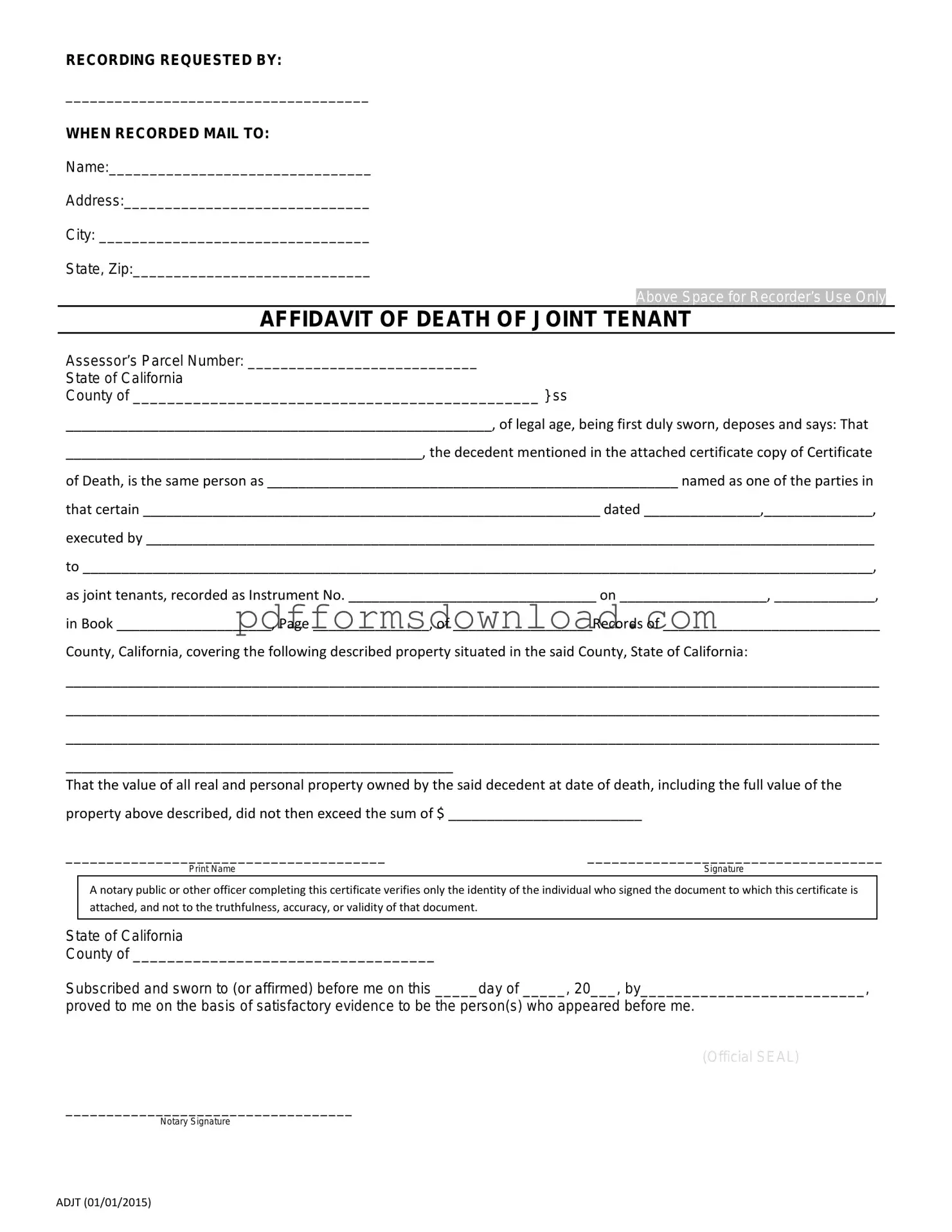What is the California Death of a Joint Tenant Affidavit form?
The California Death of a Joint Tenant Affidavit is a legal document used to transfer ownership of property when one of the joint tenants passes away. This form serves as proof of the death and helps ensure that the remaining joint tenant(s) can establish their full ownership rights without the need for probate. It simplifies the process, allowing for a smoother transition of property ownership in accordance with California law.
Who should file the affidavit?
The affidavit should be filed by the surviving joint tenant or tenants. If you were listed as a joint tenant on the property title and the other joint tenant has died, you have the right to file this affidavit. It is essential to ensure that the form is completed accurately to avoid any complications in transferring ownership.
What information is required on the affidavit?
When completing the affidavit, you will need to provide specific details, including the name of the deceased joint tenant, the date of their death, and information about the property, such as its address and legal description. Additionally, the affidavit must be signed by the surviving joint tenant(s) and may require notarization to confirm its authenticity.
Is notarization necessary for the affidavit?
Yes, notarization is typically required for the California Death of a Joint Tenant Affidavit. Having the document notarized helps verify the identity of the signer and adds an extra layer of credibility to the affidavit. This step is crucial in ensuring that the affidavit is accepted by the county recorder’s office when you submit it for recording.
Where do I file the affidavit after completing it?
Once the affidavit is completed and notarized, it should be filed with the county recorder's office in the county where the property is located. This filing is important because it officially updates the property records to reflect the change in ownership. Be sure to keep a copy of the filed affidavit for your records, as it may be needed for future reference or transactions involving the property.
